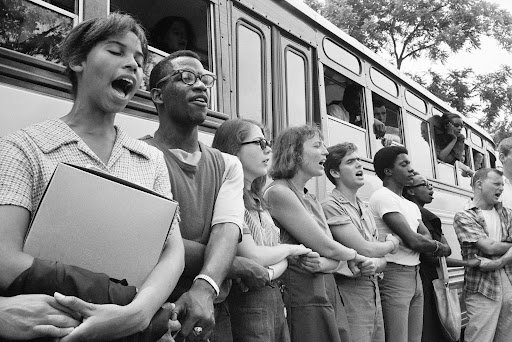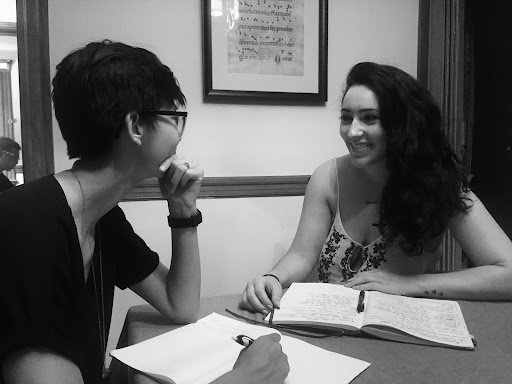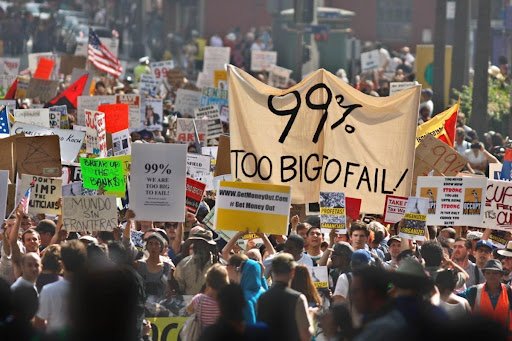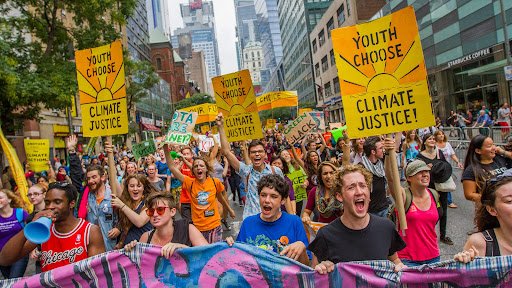The Momentum Model:
A Living Model for Hybrid Organizing
The Momentum model is a synthesis of best practices from the field of civil resistance, social movement theory, labor and community organizing, and organic systems theory. All of this is in perpetual conversation with on-the-ground experimentation within our own community of practice. We see ourselves as descendants and students of social movements from around the world, such as the anti-apartheid movement in South Africa, the Civil Rights Movement in the US, the Color Revolutions in Eastern Europe, and decolonization efforts throughout the Global South.
Momentum trains and supports organizers in a living model to build social movements that change public opinion and institutionalize wins on the most pressing justice issues of our time. This living model contains foundational frameworks and practices as well as core tools to deploy based on a particular movement context.
The Momentum model adds up to more than a theory or a collection of historical lessons: it is a comprehensive set of tools and frameworks intended to address the major building blocks of an effective movement. We call it the “Momentum model” not because we invented these best practices, but simply as a shorthand for their synthesis. We also refer to the model as “living” because it is systematically adapted based on results from experimentation on the ground. Below is an outline of the model and the theory of change behind it.
Momentum’s Theory of Change
Momentum believes that our world is broken because human beings have lost our connection to ourselves, our communities, and our planet. There are many ways to bring wholeness, reciprocity, and community to our lives. We value and appreciate all the nonviolent approaches to healing our world as part of a larger ecosystem.
Taking an “ecological” view to social change allows us to appreciate the diversity of efforts required to restore wholeness to the individual, the community, and the larger systems that shape our lives. We tend to group social change efforts into 3 basic approaches:
Personal transformation (i.e. yoga, therapy, education),
Alternative institutions (i.e. worker coops, time banks, ashrams), and
Dominant institutional change (i.e. advocacy, community and labor organizing, mass protest).
In Momentum, we believe that the three basic approaches are complementary and we believe that the ecosystem functions best when organizations identify and make explicit their primary approach.
Taking an ecological view also allows us to identify gaps in the ecosystem. The Momentum model was created to fill one such gap.
Two Organizing Traditions
Within dominant institutional change, grassroots organizing occupies an essential role: if you’re reading this, there’s a good chance you’ve committed your life to grassroots organizing because you understand it as the most effective means for regular people like us to reshape society and restore wholeness to the individual, the community, perhaps the world.
Within the U.S., we have two major traditions of grassroots organizing: in Momentum we call these structure-based organizing and mass protest. If you’re an activist in the U.S., chances are you were brought up through one or both of these traditions.
Structure-based organizing is a catch-all term for organizing that tends to target a decision-maker (i.e. a policy maker, a boss) with an instrumental demand (i.e. a new policy or piece of legislation), and to create leverage over that decision-maker by building a base. Structure-based organizing typically starts with winnable issues that the constituency cares about, such as installing stop signs or speed bumps, and prepares a base for these campaigns through 1-on-1’s and deep leadership development.
This tradition finds articulation in Saul Alinsky’s writing (such as Rules for Radicals), and has been institutionalized through well-known organizations like the IAF, PICO, ACORN, and training institutes like Midwest Academy and People’s Action. The underlying theory of change of structure-based organizing is that if we win small demands in the short term, activists will have an experience of victory which in turn grows the base and allows us to win larger demands over the long term in a virtuous cycle. This broad category of organizing gets its name because relational organizing happens through existing structures within communities (i.e., faith institutions, schools, the workplace, neighborhood associations).
Mass protest, on the other hand, refers to a tradition of disruptive action that publicly expresses outrage and urgency around a given issue. Mass protest runs the gamut from local, disruptive actions, such as the 1960 lunch counter sit-ins during the civil rights movement, to actions that spread like wildfire across the country, as we saw with Occupy in 2011 and again in the summer of 2020 following the murder of George Floyd. A core feature of this tradition, however, is that it attracts and mobilizes the general public: the people who show up at an action have not been turned out through a series of phone calls by staff organizers, but are instead mobilized through word of mouth.
Examples of this include the 1963 Children’s March in Birmingham, the 2006 immigrant marches, the 2014 protests in response to Eric Garner’s death, and the 2017 Women’s March. Mass protest’s core theory of change is that disruptive action with popular demands will polarize the public and, in the words of Martin Luther King Jr., “dramatize the issue [so] that it no longer can be ignored.”
Though the reality of diverse organizing efforts does not fit neatly within these two traditions, we find the schema helpful in illuminating the fact of lineages in U.S. organizing, as well as the strengths and weaknesses of each lineage: structure-based organizing can develop deep leadership in the base, plan and win incremental campaigns, and sustain action over the long term, but is limited to winning what the current social and political conditions permit and is unable to scale without staffing up. By contrast, mass protest can activate far greater numbers of volunteers through decentralized networks and can change the political weather to make new demands winnable, but tends to have trouble sustaining itself over the long term, maintaining unity internally, or securing concrete reforms.
This is why Momentum proposes a hybrid model that integrates the best of both traditions to overcome the limitations of each. There have been numerous instances of hybrid models throughout history, including the Indian independence movement, the South African anti-apartheid movement, the Civil Rights Movement in the U.S., and the Serbian student movement Otpor. What makes these movements unique is that they were able to scale and sustain themselves without staffing up, plan disruptive campaigns that changed the political weather, and win sweeping, previously unimaginable reforms. While the media tends to represent movements as unplanned eruptions caused by a perfect storm of conditions, organizers and social scientists alike have shown over and over again that skills and strategies are a key determining factor in whether movements win or lose—and that winning movements change the political weather instead of simply responding to it.
There is currently a gap in the ecosystem of social change efforts: we need powerful, popular movements to disrupt the status quo and expand the scope of what’s politically possible. Movements are necessary to create crises that shift society towards a new set of values that will establish reciprocity and community. The Momentum model is a blueprint for building those movements.
The Role of Social Movements
The premise of social movements is that power is distributed throughout society, not concentrated amongst those at the top. Those in power rely upon the participation and compliance of the rest of society to maintain the status quo. If enough of us refuse to cooperate, we can create a crisis and change the political weather. Momentum believes that social movements remind people of their power, which they have been systematically taught to disregard.
Before a transformative change in society can be institutionalized, popular movements succeed by shifting public opinion and targeting the public. The movement shifts popular opinion by engaging people where they’re at—moving them towards agreeing with what the movement is fighting for and taking action as part of the movement. When the movement influences enough people’s beliefs and behaviors, decision-makers have no choice but to follow public opinion or become irrelevant. For example, in 2006 many people in power were opposed to gay marriage but by 2016 this was unthinkable. Social movements have made this new common sense possible on a range of issues, such that no decision-maker could credibly propose returning to slavery, denying women or Black citizens the right to vote, or re-segregating the South. By targeting the public, we not only make massive shifts winnable, but also make them far less reversible.
How does a movement win public support? A movement wins when it has the support of a sustained active minority and a passive majority of the public. The movement can tell how it’s doing by measuring its capacity and popular support on its issue: these are the two core metrics of success. We know we are winning when we are getting more people to take action with the movement (by marching, signing petitions, donating, etc.) and getting more people to sympathize with our issue (polling is useful for measuring this).
The Cycle of Momentum
To shift popular opinion, we need momentum: in other words, increasing numbers of people escalating together over time. Movements can generate momentum and shift the political weather by following this cycle:
Escalation is what happens when people take disruptive action together.
Absorption is what happens during and immediately following any escalation. This is the systematic process of bringing newly activated people into the movement so that the movement grows in capacity and can escalate with greater impact over time. Absorption can mean new people signing an online petition, joining a mass call, or attending an orientation training. Good absorption doesn’t just move people onto a ladder of engagement -- it puts them on an elevator of engagement so that the most enthusiastic new leaders can step into high levels of responsibility quickly.
Active Popular Supportis the shift in public opinion that results from an escalation. This change in the public sets the stage for the next phase of escalation and absorption.
Movement “DNA”
Leadership in popular movements means creating opportunities and systems for mass participation. To do this, leaders must design the “DNA” of a movement cycle so that they can give away the strategy, story, structure, and culture of a movement to hundreds of thousands of people, many of whom will be taking action for the first time. To weather threats and opportunities over time, strong movement DNA must answer the following questions:
1) Story: How can we create a public-facing identity and narrative that will inspire people to join our movement and advance a new common sense around our issues?
2) Strategy: How can we build a multi-phase strategy that withdraws consent from and cooperation with the status quo to effect change in both public opinion and policy?
3) Structure: How do we create volunteer structures that can scale by absorbing thousands of new members each year and distributing leadership through clear roles, teams, and lines of support?
4) Culture: How do we design a system of values, principles, and practices that can be disseminated throughout a movement to embody the kind of interdependence and reciprocity we want to see in the world?
Momentum gives leaders a step-by-step frontloading process to support them in answering these questions. Frontloading is Momentum’s hallmark strategic planning process to launch a 3-5 year movement cycle with a unified story and strategy to win a particular demand, usually through a new movement organization.
Experimentation
When movement conditions are ripe, frontloading can create a necessary intervention within the movement ecology that activates new constituencies, changes the narrative on an issue, and brings tens of thousands more people along with the movement.
However, frontloading a new movement organization with a 3-5 year plan isn’t always what is needed. Sometimes it makes the most sense for movement practitioners to experiment with a campaign that can test the waters and see what is possible and necessary within a particular ecology.








